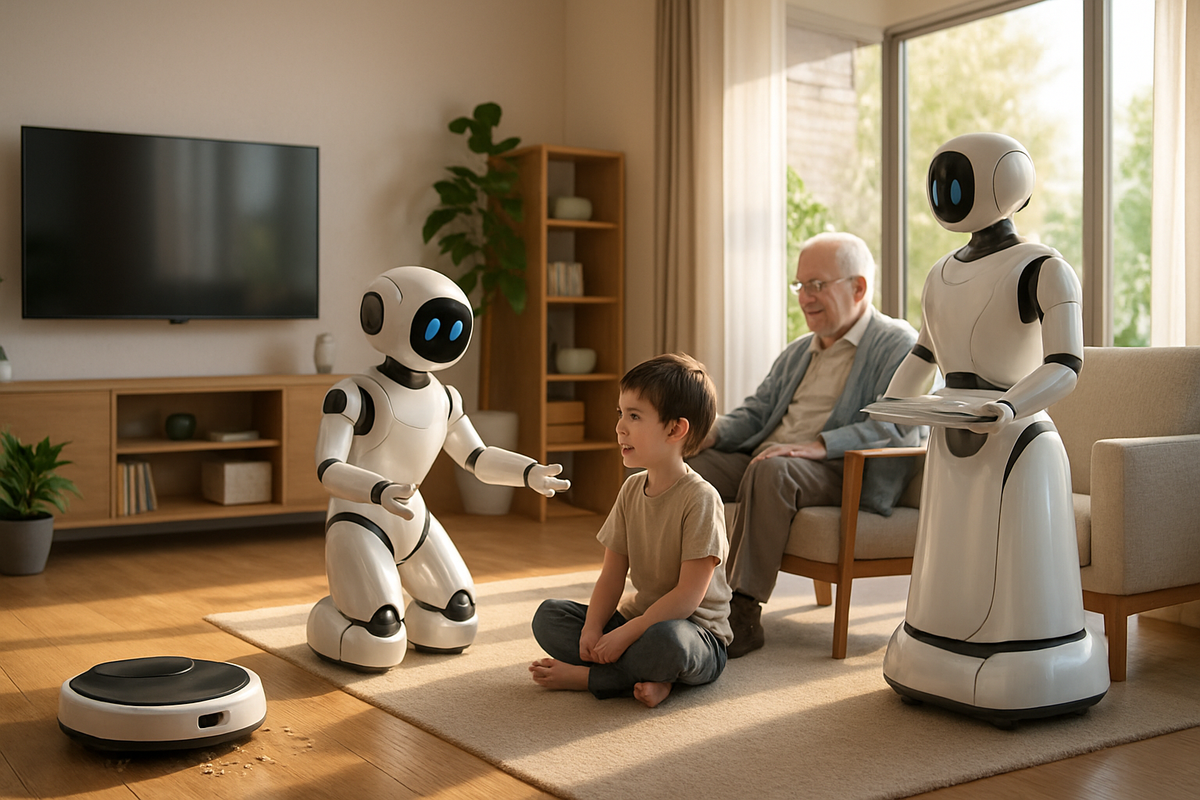The Home Robot Revolution: What You’ll Actually Own (and Want) by 2035
Dive into the future of home robots: practical, affordable bots transforming your daily life by 2035. Discover the latest innovations minus the sci-fi hype, and learn how they’ll make home life safer, easier, and a bit more fun.

A definitive, user-focused guide to the next decade of home robotics—what you’ll actually want (and afford) by 2035. Forget the sci-fi hype: here’s what’s real, what’s coming, and how it’ll change your life.
Welcome to 2035: Where Are the Robots We Were Promised?
Picture this: It’s 2035. Your alarm goes off, your coffee’s already brewed, and the laundry’s—well, still piled up, but at least the vacuum bot didn’t eat your socks. The home robot revolution is finally here, but it’s not quite the Jetsons—or the dystopian uprising Hollywood loves. So, what will you really own? And will you actually want it in your house?
“We should build more R2-D2s and less C-3POs.”
— Dor Skuler, CEO & Co-Founder, Intuition Robotics
From Sci-Fi Dreams to Real-World Bots: The Truth About Tomorrow’s Home Robots
Let’s get this out of the way: By 2035, you will not have a humanoid butler folding your towels or quoting Shakespeare in the kitchen. But the bots you will have? They’ll be practical, affordable, and—dare we say—actually helpful.
What’s Coming: The Four Big Robot Types You’ll Want
- Companion Bots: Think digital friends for the elderly, like ElliQ, designed to combat loneliness and boost health (and yes, they’re already reducing hospital stays).
- Automated Helpers: Roombas on steroids—next-gen cleaning bots that vacuum, mop, and maybe even sort your laundry (if you trust them with your socks).
- Caregiving Assistants: Not full-blown nurses, but clever reminders, medication managers, and social companions for aging-in-place families.
- Security & Monitoring: Mobile sentinels (like Amazon’s Astro) that patrol your home, check for hazards, and send alerts—minus the creepy red eye.
The Robots You’ll Actually Own (and Why)
Let’s break down what’s moving from the lab to your living room—and how much you’ll pay (spoiler: no second mortgage required).
1. The Rise of the Companion Bot
Forget the cold, metallic C-3PO. The most successful robots are closer to R2-D2: approachable, friendly, and designed for a single job—like ElliQ, the AI sidekick for seniors already deployed across New York. Studies show over 90% of users report less loneliness, better medication adherence, and lower hospital visits. Price tag? About $50/month as of 2025, trending down as adoption grows.
2. Next-Gen Automated Cleaners
Robot vacuums and mops are just the beginning. By 2035, expect bots that can tackle clutter, spot messes, and maybe even fold laundry (okay, we’re cautiously optimistic here). The real winners will be affordable, specialized bots—think $200–$1000, each laser-focused on vacuuming, mopping, or even lawn care.
3. Caregiving & Health Tech Bots
With populations aging fast (the U.S. will have more people over 65 than under 18 by 2035!), expect a boom in robots that keep loved ones safe and independent. These bots won’t replace human caregivers, but they’ll remind about meds, check vitals, and provide social interaction. Expect monthly subscriptions or modest upfront costs—cheaper than full-time home care, and less awkward than hiring a Shakespeare-quoting android.
4. Home Security Robots
Security will get smarter—not scarier. Devices like Amazon’s Astro already roam homes, check for open windows, and send alerts. By 2035, expect improved privacy controls, better AI, and price points to match a decent security camera (think $500–$1500, and dropping).
What About Humanoids? (Sorry, Rosie Fans)
Humanoid robots, like those dazzling crowds at China’s “Robot Olympics” or Tesla’s much-hyped Optimus, are grabbing headlines. But for your home? Not yet. The reality: they’re expensive (think new car money), fragile, and—no offense—more likely to trip over your cat than cook you breakfast.
“What’s in common between old people and humanoid robots? They fall down a lot, they break easily, and they’re very expensive to fix.”
— Steve Cousins, Executive Director, Stanford Robotics Center
Expert Advice: How to Choose Your First (or Next) Home Robot
- Start with a need, not a novelty. Is it companionship, cleaning, or caregiving? Don’t buy a robot just because it looks cool—make sure it solves a real problem.
- Check reliability and support. If your robot works 70% of the time, that’s not a helper—it’s a headache. Look for proven brands with solid customer reviews.
- Think modular, not monolithic. It’s cheaper (and safer) to buy specialized bots than one expensive “do-it-all” humanoid. Let your vacuum vacuum, your lawn bot mow, and your companion bot… well, keep you company.
- Watch for the privacy fine print. The more your bot knows, the more you need to trust how it handles your data. Read up before you plug in.
What’s Next? The Future of Home Robots Is… You
The next ten years will see a parade of practical robots—not a robot uprising, but a slow, steady march of helpers that make home life easier, safer, and a little more fun. Will you have a robot chef by 2035? Maybe. But you’ll definitely have bots that vacuum, remind you to call your mom, or keep your grandparents company.
Want to stay one step ahead of the home robot revolution?
Become a Funaix Insider for free! Subscribers get exclusive smart news, expert tips, and can join the conversation in our members-only comments—because, let’s face it, the best robot insights come from curious humans (like you). Subscribing is free, for now—don't miss your spot in the future of smart living.
Published: August 17, 2025
For more guides, trends, and smart-living insights, subscribe and join the Funaix community today!




